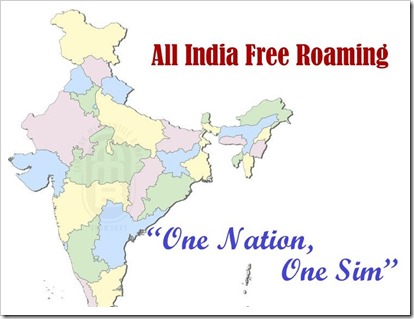TRAI Ends “Roaming” Cash Cow Of Telcos In 6 Months
The Department of Telecommunications is one Dept affected the most with the rapid change in technology and consumer habits. With 22 circles, moving across circles depletes your mobile balance or raises your bills for sure. So in 2012, it had come up with the National Telecom Policy where it toyed with the idea of a single number across India, better known as Mobile Number Portability (MNP). It was limited to intra-circles.
Now, TRAI has come up with recommendations for, what is better known as, One Nation One Number or Full Mobile Number Portability or Pan India Number Portability. Europe, too, is considering it now.
It is said to benefit providers like Idea Cellular, Bharti Airtel and Vodafone which had earlier benefitted from intra-circle level MNP. MNP was implemented in January 2011 and roughly 95.59 million subscribers opted for it by the end of June 2013. TRAI had also ensured that telcos do not deny MNP to its customers.

Lets understand it better. For eg: you are a resident of Gujarat and are a Reliance mobile customer. You are not happy with their service and want to change to, say, Idea. Now, you are scared of changing your long used number but also want to change the services of Reliance. So, you simply fill up a form and within few days, bingo! You are shifted to Idea RETAINING the same number.
Now, if you are transferred to Mumbai, you have to get a local Mumbai number OR use the Gujarat number in roaming (remember: telcos used to charge a bomb for roaming). Not anymore!
With these recommendations of TRAI, things will be fast-tracked onto having One Nation One Number a reality. So from Reliance or Idea or any service provider in any state you can shift to Airtel or Vodafone or Aircel or any service provider in any state with the SAME number. Wow !!!
Now TRAI, in consultation with the stakeholders (read: telcos) and lots of deliberations finally recommended a way to implement it (it was one of the three alternatives which was shortlisted). To quote it verbatim, “In this approach, the Recipient Operator submits the porting request to the MNPSP in whose zone the Number Range network belongs. As all TSPs already have connectivity with both the MNPSPs they will not have to make any changes in communicating with the MNPSP of the other zone. This approach also does not require interaction between the two MNPSPs. Therefore, this method eliminates the need for connectivity /synchronization between the two MNPSPs. However, in this approach, intelligence needs to be built-into the operator’s NPG so as to forward the porting request to the concerned MNPSP based on the identity of the number range holder network.”
What it actually means: Quoting the previous example of a Gujarati Reliance customer wanting to shift to Mumbai Airtel, Mumbai Airtel becomes the Recipient Operator which submits the customer’s porting request to the Mobile Number Portability Service Provider that oversees Mumbai circle. All future porting requests will be handled by it only.
Under this approach, no interconnection between the MNP providers is required, leading to minimal costs for installing this system. Only catch is that the operators should have Number Portability Gateways built in to automatically forward the porting request based on the subscriber’s identity.
The Catch
The Telecom Service Providers (TSPs) are given 6 months to implement it Pan-India. But given our Telco’s unwillingness to lose revenue earned via roaming, my bet is it would take much more time than that.
TSPs will also be required to upgrade their existing backend system such as CRM, mediation platform, provisioning systems/ activation systems, billing systems, number managements systems, recharging platform, VAS management system, etc. and MNPSPs are required to upgrade their MCH (Mobile Number Portability Clearing House), to support complete numbering plan, graphical user interface (GUI), among others; again, a technologically demanding task and time-consuming.
A few changes are also needed in the already existing Mobile Number Portability license conditions. For eg: intra license service areas now become intra and inter, both. TRAI has also asked the telecom department to make changes in the existing MNP licenses as well as to its own instructions given out in May 2009. Also, the Acceptance Testing Fee for operators is said to be reduced by 25%.
What about STD calls?
The caller may not know the number to which he is calling is in the same state (local) or other state (due to this Full MNP). So subscribers have been told to educate themselves to dial numbers in the +91 format only. And as STD rates are almost like local call charges, it shouldn’t matter much.
However, the onus completely lies on the calling party to know the whereabouts of the number being called to, else bear STD charges. So gone are the times when you read a number and decided its local or not. 6 months from now, you would be definitely wrong.
Implications:
According to industry data, free roaming is likely to benefit over 12% of mobile users. But operators’ bottom lines would be impacted by good bit, as they would pay the national long-distance cost.
Also, the porting charge per customer is yet to be unveiled. In hindsight, this was waiting to happen. With India having among the lowest calling rates in the world, this roaming cash cow is also gone.
Will telcos find a new way to retain/increase its ARPU (Average Revenue Per User) or lobby hard to extend this 6 months?
